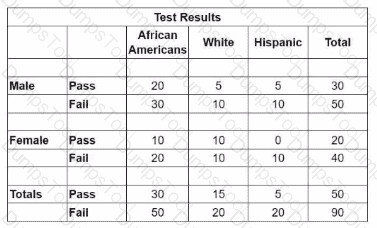For an HR professional to become a strategic business partner, it is most critical to:
After receiving a large order, the shipping supervisor of a unionized manufacturing plant informs the crew that an overtime shift will be scheduled for the following Saturday. Three of the employees strongly object but do not provide acceptable excuses for not working the extra shift. On Saturday, none of the three employees report to work and the supervisor is forced to call out replacement employees from other departments. On the following Monday, as part of an investigation to determine if disciplinary action is called for, the supervisor instructs each of the employees to report alone to the office immediately after their shifts. The supervisor's intention is to question them about their failure to report for the overtime shift as required.
The employer’s policy provides a four-level, progressive disciplinary system. If disciplinary action is appropriate, the factor that has the most direct bearing on the level of discipline enforced is each employee’s:
Which of the following assists in building connections to an organization's diversity, equity, and inclusion (DEI) goals?
For purposes of succession planning, which tool is best to evaluate an employee's current performance?
To manage an employee engagement survey effectively, the most important factor is to:
When terminating an employee, how can an employer discourage a wrongful discharge lawsuit?
A nonexempt employee, who is a reservist in the US Army, is called to active duty with an assignment for six months of service. When the assignment ends early, the employee asks to return to work after five months of leave. What are the requirements for reemployment?
What is a common analytical use for a human resources information system (HRIS)?
Which of the following is a measure of the variability of ratings in a selection instrument?
The primary role of the mediator in Alternative Dispute Resolution (ADR) is to:
HR can best promote collaborative work environments by: (Select TWO options.)
The Equal Employment Opportunity Commission (EEOC) limits compensation and punitive damages based on:
Which of the following factors are key to a successful enterprise resource planning system implementation? (Select TWO options.)
What are the most important factors when developing a diversity, equity, and inclusion (DEI) strategy? (Select TWO options.)
An organization has 39 full-time employees (FTE) and 25 part-time employees all working at the same location. The spouse of an employee in a lawfully recognized common-law marriage was diagnosed with an illness that requires extensive care. The employee requests Family and Medical Leave Act (FMLA) leave to begin immediately. The employee has been working full time for 10 months and worked 1,300 hours during that period. Six years ago, the employee worked for this employer for 3 months. The employer requires employees to substitute accrued paid leave for unpaid FMLA leave, and also has a policy that permits the use of sick days for an employee’s personal illness only. The employee has 12 days of accrued vacation time and has accrued 3 sick days and 3 personal days.
Taking organizational policy into account, how many accrued paid days will the organization require the employee to use concurrently with the Family and Medical Leave Act (FMLA) leave?
A summary of an organization's testing results is presented. Each applicant who passes the test is hired.

The table indicates adverse impact against:
According to the Family and Medical Leave Act (FMLA), eligible employees may take leave to:
An organization that does business in three states asks a high-level executive to sign a non-compete agreement. The agreement prohibits the employee from working in that region for five years after termination. A court would most likely determine that the terms of the agreement are:
(Enter the answer as a numeric value.)
The annual yield ratio is 75%. If an organization interviews 16 candidates, it hires __________ of them.
An organization is implementing a new training curriculum to ensure employee competency in specific areas. The long-term goal is to turn the curriculum into an internal certification program that will be used as part of career development and succession planning. A Senior IT Technician files a grievance with the union, claiming that the entire program is unfair since the technician is at the highest level of the position. Which of the following scenarios could result in an unfair labor practice?
When evaluating the credibility of a witness during an internal investigation, it is necessary to consider the witness's:
Which of the following should HR do when an employee requests an emotional support animal at work?